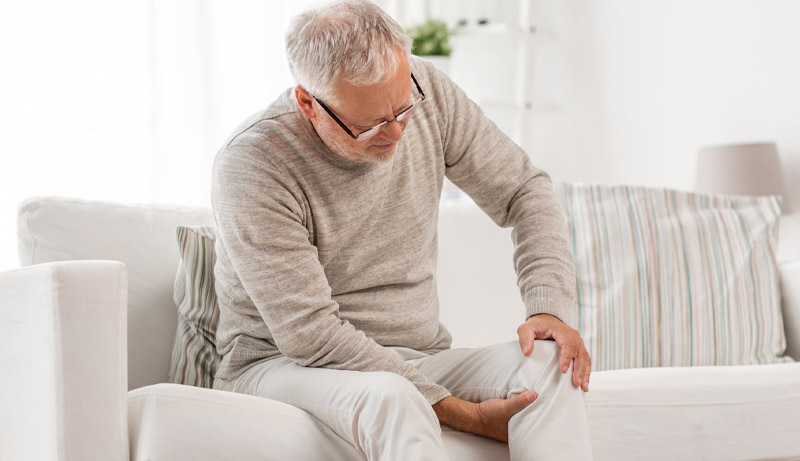
Knee pain can really cramp your lifestyle and your ability to get around, whether that pain comes from aging joints or playing soccer for two hours. Hands stiff from working in the garden, on the computer or just from osteoarthritis can limit your activities unless you do something to manage the pain. But before you reach for that bottle of Advil, Aleve or other NSAIDs (non-steroidal anti-inflammatory drugs), there are newer over-the-counter, non-prescription medications that may provide relief for pain without taking any tablet.
Quick pain relief from over-the-counter NSAID gel
Diclofenac has been an effective NSAID for joint pain since the mid-1960s. It became available as an over-the-counter medication in pill form in 2007 and in topical gel form in 2020. Pharmacist Shannon Burke, PharmD, Pharmacy Clinical Coordinator and Residency Director at Shore Medical Center in Somers Point, NJ said the diclofenac gel, sold as Voltaren, is applied directly to the painful area.
NSAIDs work by blocking specific enzymes in the body that result in swelling. If there is less swelling, there will be less pain. “The gel is able to provide quick relief from the pain and works much faster than taking any NSAID tablet,” said Dr. Burke. “The reason it is able to work so quickly is because it is applied at the site of the pain and it is absorbed directly into the skin, blocking the swelling and pain. The fact that it is in a gel form hastens its ability to relieve pain because it is already broken down.”
Following directions
The manufacturer’s directions for the use of the Voltaren gel is specific; it is to be used four times a day for 21 days and it is not to be used on more than two areas of the body at the same time. For example, if it is used on the ankle and knee, the directions indicate not to use the medication on the elbow and wrist. Dr. Burke said, “The product was approved by the Federal Drug Administration for use four times a day for up to 21 days and not to exceed its use on more than two areas in one day because that is what they felt was most beneficial to the patient. If a patient is having pain or discomfort in more than two areas, they would be better served taking an oral NSAID for the pain, rather than slathering the gel on every joint. The oral NSAID is able to help manage pain over a larger area than the topical gel.”
How much is too much?
Historically, NSAIDs can give patients gastrointestinal problems such as stomach bleeding or ulcers and high doses can harm the kidneys. Dr. Burke does not feel the over-the-counter gel presents that same GI risk. “The chance of a patient overdosing on a topical gel is extremely low because only a very small amount is absorbed into the skin,” said Dr. Burke. “While you can take a pain reliever, if needed, along with using the gel, I would advise taking Tylenol or an acetaminophen product but not ibuprofen or naproxen like Advil or Aleve.”
Dr. Burke indicated that some individuals are at risk of stomach bleeding or ulcers from oral NSAIDs if they are over 70 years of age, take oral steroids, have a history of stomach ulcers, are on blood thinners, and if they are smokers or drink alcohol daily.
Other over-the-counter products that provide pain relief
While the Voltaren gel provides NSAID pain relief, there are also products that relieve pain in other ways. Products such as Icy Hot or Mineral Ice use menthol to alleviate osteoarthritis pain. Dr. Burke explained, “Menthol dilates blood vessels and works to relieve pain. It provides a numbing effect to the skin and that is the cold or ‘icy’ feeling the patient has when it is applied. It is a distracting feeling and a soothing feeling that works to overcome joint pain.” Likewise, lidocaine will numb a painful area through the use of patches in such over-the-counter products as Salonpas.
Dr. Burke suggests using a topical product to treat joint pain as an initial treatment. “Using a topical is a good place to start to see if they can tolerate the pain without the need to take a tablet or pill. Of course, an oral pain reliever is recommended for more widespread discomfort. As always, it is good to discuss all medications and possible interactions with your pharmacist or your physician,” concluded Dr. Burke.










